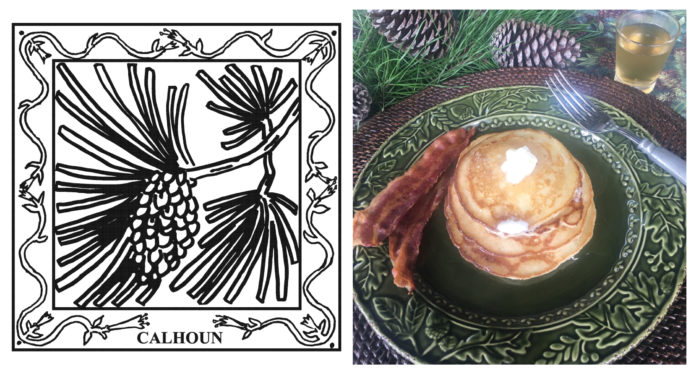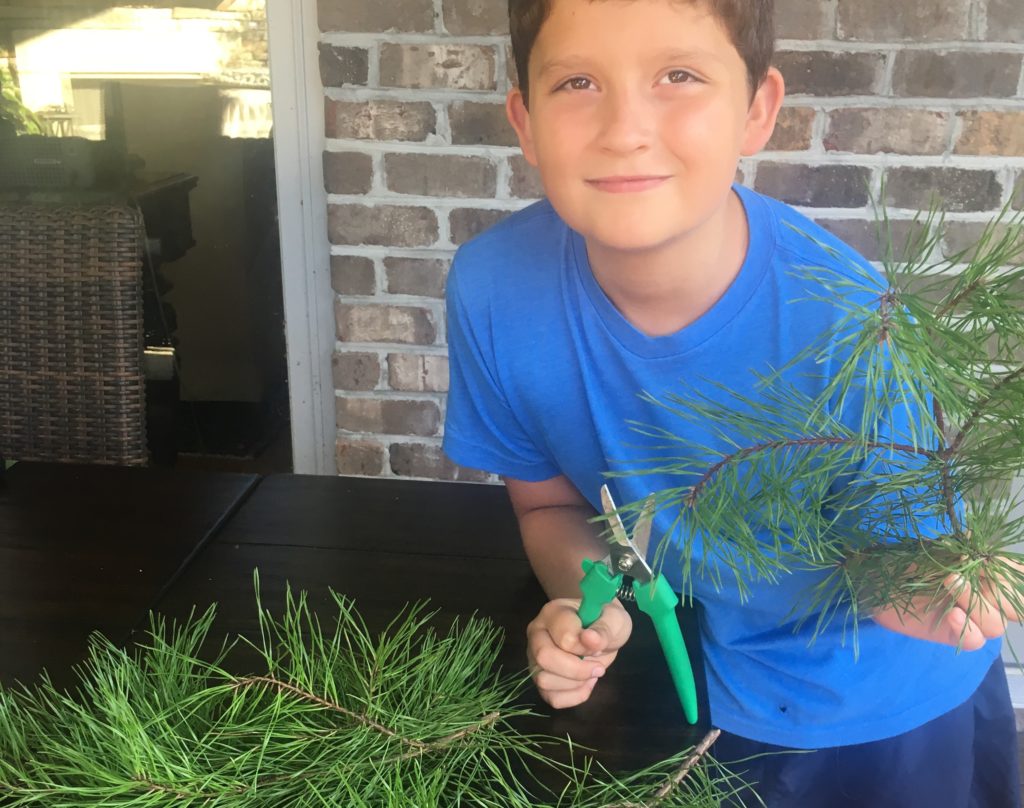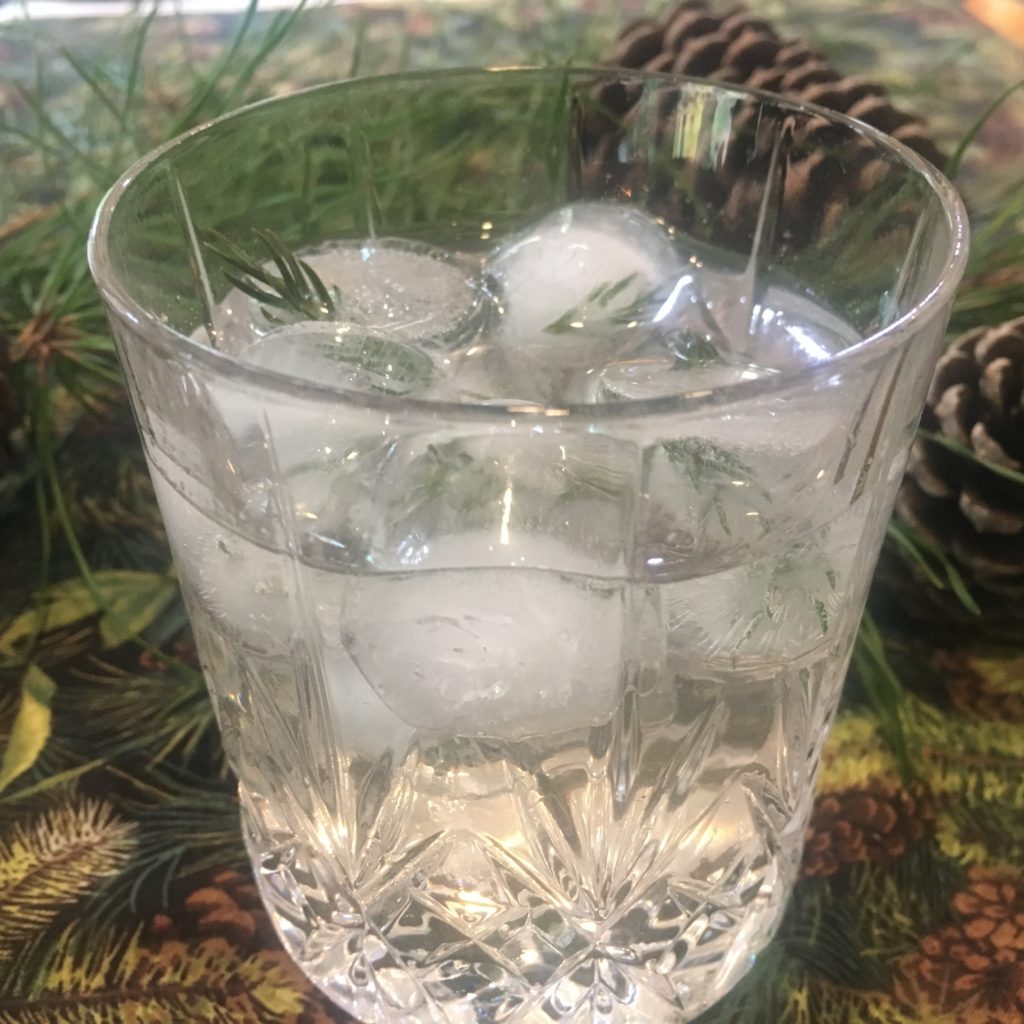
The Cullman Tribune is celebrating the Alabama Bicentennial (1819-2019) with statewide field reporting by Alabama Master Gardener/Botanical Artist Ben Johnson South. This year-long feature, “The 67-County Alabama Garden Party,” will spotlight different counties each week. Each county will get its own “quilt block,” along with a historical profile, and we’ll share a recipe specific to the area. At the end of the year, all 67 counties will be put in a book to commemorate the Bicentennial.
Calhoun County
Pines have scented the air in Alabama since the beginning as early explorers and settlers recorded in journals and letters. Calhoun County was established 1832, just a few years after statehood.
After college, I moved to the mountains of Calhoun County. When I smell fresh pine needles and pine resin, I start pining for those beautiful, sun-warmed, green hills.
Calhoun County has one of the largest remaining stands of longleaf pine in Alabama. You can imagine yourself in a magical forest where the trees look like shimmering fountains of emeralds. These pines are so cherished, the impressive new plant tourist destination in Anniston, the county seat, is named Longleaf Botanical Gardens.
The best time for us plant enthusiasts to visit Calhoun County is late-April until early-June, though every season here brings natural splendor. Springtime means mountain laurel and native azaleas are in their peak beauty. And, be on the lookout for the vivid orange flowers of the Cumberland azalea and the white flowering dogwood.
The American South has a long legacy of great storytellers. One of the 21st century’s most-popular wordsmiths, Pulitzer Prize-winner Rick Bragg, hails from the Piedmont area near Possum Trot, Alabama where he still lives part-time at the house his best-selling books bought his momma. Bragg is a friend of my brother and I’ve heard this acclaimed author tell about sliding down a slick hill of Calhoun County pine straw in a cardboard box.
Bragg’s latest offering is simply dedicated “To the cook.” The book’s title tells the rest, “The Best Cook in the World: Tales from My Momma’s Table.” This 500-pager is loaded with simple and simply delicious dishes from these Alabama hills. There are 75 recipes and this sort of culinary wisdom: “Well, how do you know when it’s done? By how it smells.” Try Miz Margaret’s Butter Rolls or her “Real Biscuits” with some of our Calhoun County Alabama Bicentennial Pine Syrup (recipe below).
Listen to how Bragg, a mesmerizing writer, brings the South alive in this quote from the current edition of Garden and Gun magazine. You can almost smell the pine trees.
“We called her Skinny because she was two dogs high and a half a dog wide. She was so lean, so long-legged and light, she seemed to glide without effort through the pines and the rocky places up high, running down a deer or just some distant sound, and she would sprint across a mountain to make sure a scent on the breeze presented no threat to her people, her porch, her place. She was just a stray that walked up one day in the yard, part redbone, foxhound, and a dozen other bloods, and old-fashioned outside, Alabama brown dog that survived abandonment and starvation and bloody battles with coons and coyotes and wild dogs.”—Garden and Gun, August/September, 2019
As famed American naturalist, John Muir said “Between every two pine trees there is a doorway to a new world.” In Calhoun County, Alabama there are countless, welcoming, pine-fragrant doorways to new worlds today, as it was for our forefathers and foremothers 200 years ago.
Here are other positive and pleasurable ways PLANTS + PEOPLE + PINES come together in Calhoun County, including our original, Bicentennial recipe for pine syrup that harkens back to the early days of Alabama:
*CALHOUN COUNTY FARMERS’ MARKET- 1702 Nobel Street, Anniston, AL 36202; Wednesdays and Saturdays, 7 a.m.-noon, April-November
*JACKSONVILLE FARMERS’ MARKET- Pocket Park between Ladiga Street and Church Avenue, Jacksonville, AL 36265; Saturdays, 8 a.m.-noon, April 12-Oct. 26
*OXFORD MAIN STREET MARKET- 400 Main Street at Simmons Park, Oxford, AL 36203; Thursdays 3-6 p.m., June 13-August 8
*ZINN PARK—THE DOWNTOWN MARKET- 101 West 14th St., Anniston, AL 36201; Saturdays, 7-11 a.m., May 4-Oct. 26
*CALHOUN COUNTY FARMSTANDS- Dorothy Brown, 2038 Brown Bridge Road, Piedmont, AL 36272; Ralph Browning, 1655 Cobb City Road, Wellington, AL 36279
*CALHOUN COUNTY BERRIES/U-PICK- Bennett’s Blueberry Farm (Anniston), Faye’s Blueberry Farm (Jacksonville), Jerry’s Berries (Jacksonville)
*CALHOUN COUNTY BLUEBERRY LEMON TRIFLE- This dessert uses locally-grown blueberries and is a good dish to celebrate those early pioneers in this part of Alabama who had British roots; full recipe at www.tasteofhome.com.
*MOUNTAIN LONGLEAF NATIONAL WILDLIFE REFUGE- On the former site of Ft. McClellan, it takes its name from the mountain longleaf pine (Pinus palustris). The 3,000 acres are open to the public from sunrise to sunset. It’s home to endangered plants like the white-fringeless orchid and endangered animals such as the red-cockaded woodpecker and the gray bat; cougars have been sighted in the area.
*LONGLEAF BOTANICAL GARDENS- 920 Museum Drive, Anniston, 256-237-6766; Call ahead as you plan your visit to check for open days and times for the public.
*CALHOUN COUNTY PLANT NURSERIES- Bloomin’ Miracles (Victoria DuBose), 651 Whites Gap Road, Jacksonville; J&M Plants (Jerry Dempsey), 3220 Bynum Leatherwood Road, Anniston
*LOCAL EATERIES USING LOCALLY GROWN INGREDIENTS- Rosie’s Gourmet 2 Go (Anniston); Garfrericks Café (Oxford); Hubbard’s Off Main (Oxford); Cheaha Brewing Company (Anniston)
*CALHOUN COUNTY HIKING/OUTDOOR ATTRACTIONS- Choccolocco Park (Oxford); Terrapin Creek Outdoor Center (Piedmont); Coldwater Mountain Bike Trail (Jacksonville); Jacksonville Chief Ladiga Trail (Anniston/Jacksonville/Piedmont)
*SPIRIT ON MOUNTAIN STREET- Jacksonville festival with local food vendors, the Jacksonville State University cheerleaders and band- a variety of entertainment
*WEAVER HERITAGE DAYS- (Weaver Community) Sept. 14, 2019; Celebrate Alabama’s Bicentennial with heritage farm crafts, food vendors and old-time entertainment.
*CALHOUN COUNTY AGRICULTURAL FAIR- Popular annual event with homemade food and canning contests, crafts, amusement park rides, livestock show and judging- Oct. 10-12
*ANNISTON MUSEUM OF NATURAL HISTORY- This popular attraction has 85,000 visitors a year to explore 2,000 natural history objects; on the grounds is an impressive wildlife garden.
*ALABAMA URBANIST and PLANT EXPLORER- Hayes Jackson, based in Calhoun County, is one of three “urbanists” of the Alabama Cooperative Extension System. Jackson has been called “The Indiana Jones of Plants” because of his intrepid exploration of exotic plants in various parts of the world. His office is at Longleaf Botanical Gardens.
*PLANTING AN IDEA- “FAMOUS ARTISTS CELEBRATE THE PINE TREE”- For centuries artists have been captivated with the sculptural beauty of pines. I’m immediately thinking of the Japanese woodblock prints Vincent van Gogh collected which inspired his own paintings of pines like “Pine Trees against a Red Sky.” Also, pines have been celebrated in artistic masterpieces by Monet, “Under the Pine Trees at the End of the Day” in 1888, by Impressionist Paul Signac, “The Pine Tree at St. Tropez” in 1909; many works by the Japanese painter Utaga Hiroshige, Georgia O’Keefe, “D.H. Lawrence Pine Tree” and others. The art historians at Jacksonville State University working with the local office of the Alabama Cooperative Extension System could curate a show of pine tree art as a draw for both plant tourism to see the Calhoun County longleaf pines and for art tourism. And, a flash show of such pine tree masterpieces would make a lasting edition to exhibits at Longleaf Botanical Gardens or one of the local museums. I’m hearing background music of the majestic “Pines of Rome” by Respighi, perhaps interwoven with some Alabama Hank Williams.
Y’ALL COME on to Calhoun County on your 67-County Alabama Garden Party tour, and you’ll be pining for many future return visits.
THANK YOU to Dr. David West, coordinator of the Calhoun County office of the Alabama Cooperative Extension System for his many suggestions for celebrating where PLANTS + PEOPLE come together. Also, thank you to Laurie Johnson and her grandson, young chef and Cub Scout, Andrew Johnson, for sharing their recipe for Alabama Bicentennial Pine Syrup to enjoy with Rick Bragg’s momma’s “Real Biscuits.”
Calhoun County Alabama Bicentennial Pine Syrup
Yes, syrup from pine trees! It seems that our ancestors and people all over the world have been extracting flavor from edible plants, herbs and even trees for centuries. Evergreen conifers, pines, are prolific year-round in most climates and they certainly are in Alabama. Making your own syrup from pine is a novel way to add an herbaceous, natural flavor to anything that also needs a bit of sweet. It is even rumored that pine extract has medicinal properties, but no such claim is being made here! Whether you harvest needles from your gently used Christmas tree or from trees outside in nature, this recipe is a great one for kids of all ages to have fun concocting a unique accompaniment for their pancakes, lemonade, tea or favorite cocktails (for the “of-age kids,” of course).
Ingredients:
- A couple of handfuls of fresh pine needles, still on their stems
- About 5 cups water
- 1 cup granulated sugar
Instructions:
- Wash the pine needles and stems very well. Break or snip, both the needles and stems, into about 1-inch pieces. Smash up the ends of the stem pieces to allow them to release more flavor.
- In a medium sized saucepan or Dutch oven with a tight-fitting lid, mix the water and sugar together and bring to a boil. Reduce heat and simmer for about 30 minutes, stirring occasionally, until it reduces to about half and thickens.
- Immerse the cleaned and snipped pine needles and stems into the pan and stir them in for a minute until all are mixed into the liquid. Cover with tight-fitting lid and remove from the heat.
- Allow the mixture to sit, undisturbed until cool, for at least 4 hours or even overnight for the pine flavors to be extracted into the hot liquid.
- Using a fine mesh sieve or colander, strain the syrup mixture into a bowl and discard the solids.
- Rinse the colander and strain again into a clean bowl, this time with the sieve lined with cheesecloth (or paper towel if you don’t have the cloth). Squeeze the liquid through at the end if needed to get all the syrup that you can.
- Place into a jar or bowl with a lid and refrigerate for a few weeks if not using quickly.
- Enjoy on pancakes or waffles, to sweeten lemonade or tea or in place of simple syrup in your favorite cocktail.
Also, check out Alabama Bicentennial: 200 ways to save Alabama for the next 200 years.
Copyright 2019 Humble Roots, LLC. All Rights Reserved.


Alabama Bicentennial Pine Syrup can be used in your favorite cocktail.



























